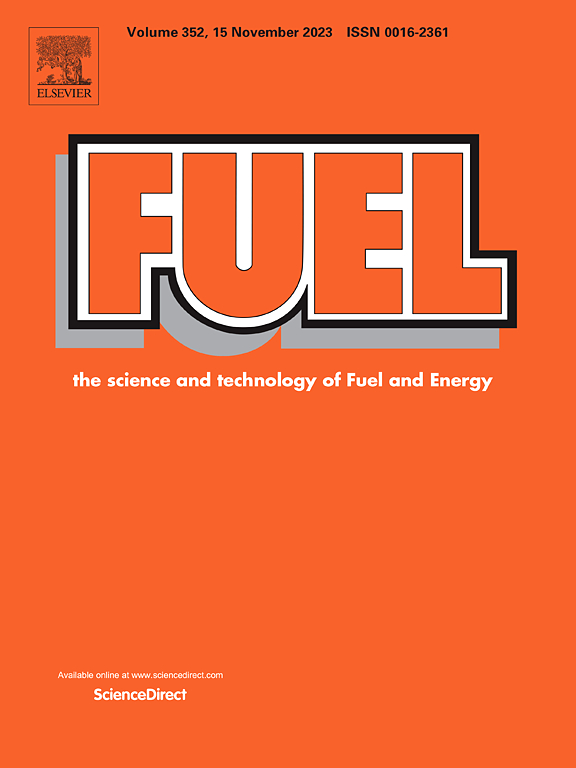Insights into site evaluation for underground hydrogen storage (UHS) on gas mixing-the effects of meter-scale heterogeneity and associated reservoir characterization parameters
IF 6.7
1区 工程技术
Q2 ENERGY & FUELS
引用次数: 0
Abstract
Underground Hydrogen Storage (UHS), as an emerging large-scale energy storage technology, has shown great promise to ensure energy security with minimized carbon emission. A set of comprehensive UHS site evaluation criteria based on important factors that affect UHS performances is needed for its potential commercialization. This study focuses on the UHS site evaluation of gas mixing. The economic implications of gas mixing between injected hydrogen gas and the residual or cushion gas in a porous storage reservoir is an emerging problem for Underground Hydrogen Storage (UHS). It is already clear that reservoir scale heterogeneity such as formation structure (e.g. formation dip angle) and facies heterogeneity of the sedimentary rock may considerably affect the reservoir-scale mechanical dispersion-induced gas mixing during UHS in high permeability braided-fluvial systems (a common depleted reservoir type for UHS). Following this finding, the current study uses the process-mimicking modeling software to build synthetic meandering-fluvial reservoir models. Channel dimensions and the presence of abandoned channel facies are set as testing parameters, resulting in 4 simulation cases with 200 realizations. Numerical flow simulations are performed on these models to investigate and compare the effects of reservoir and metre-scale heterogeneity on UHS gas mixing.
Through simulation, channel dimensions (reservoir-scale heterogeneity) are found to affect the uncertainty of produced gas composition due to mixing (represented by the P10-P90 difference of hydrogen fraction in a produced stream) by up to 42%. The presence of abandoned channel facies (metre-scale heterogeneity), depending on their architectural relationship with meander belts, could also influence the gas mixing process to a comparable extent (up to 40%). Moreover, we show that there is no clear statistical correlation between gas mixing and typical reservoir characterization parameters such as original gas in place (OGIP), average reservoir permeability, and the Dykstra-Parsons coefficient. Instead, the average time of travel of all reservoir cells calculated from flow diagnostics shows a negative correlation with the level of gas mixing. These results reveal the importance of 3D reservoir architecture analysis (integration of multiple levels of heterogeneity) to UHS site evaluation on gas mixing in depleted gas reservoirs. This study herein provides valuable insights into UHS site evaluation regarding gas mixing.
地下储氢(UHS)作为一种新兴的大规模储能技术,在确保能源安全的同时最大限度地减少碳排放方面显示出巨大的前景。为了实现潜在的商业化,需要一套基于影响 UHS 性能的重要因素的综合 UHS 现场评估标准。本研究重点关注 UHS 现场气体混合评估。注入氢气与多孔储层中的残余气体或缓冲气体之间的气体混合所产生的经济影响是地下储氢(UHS)面临的一个新问题。目前已经很清楚,在高渗透率编织流沙系统(UHS 的常见枯竭储层类型)中,储层尺度的异质性,如地层结构(如地层倾角)和沉积岩的面异质性,可能会在很大程度上影响 UHS 过程中储层尺度的机械分散诱导的气体混合。根据这一发现,本研究使用过程模拟建模软件建立了合成蜿蜒流储层模型。将河道尺寸和是否存在废弃河道面设定为测试参数,从而产生了 4 个模拟案例,共 200 个实例。对这些模型进行了数值流动模拟,以研究和比较储层和米尺度异质性对超高压合成气混合的影响。通过模拟发现,通道尺寸(储层尺度异质性)对混合(以合成气流中氢气组分的 P10-P90 差值表示)导致的合成气成分不确定性的影响高达 42%。废弃通道面(米尺度异质性)的存在(取决于它们与蜿蜒带的结构关系)也会对气体混合过程产生类似程度的影响(高达 40%)。此外,我们还发现,气体混合与典型的储层特征参数(如原地气(OGIP)、储层平均渗透率和戴克斯特拉-帕森斯系数)之间没有明显的统计相关性。相反,根据流动诊断计算出的所有储层单元的平均流动时间与气体混合程度呈负相关。这些结果揭示了三维储层结构分析(整合多层次的异质性)对贫化气藏气体混合的 UHS 现场评估的重要性。这项研究为有关气体混合的超高压勘探现场评估提供了宝贵的见解。
本文章由计算机程序翻译,如有差异,请以英文原文为准。
求助全文
约1分钟内获得全文
求助全文
来源期刊

Fuel
工程技术-工程:化工
CiteScore
12.80
自引率
20.30%
发文量
3506
审稿时长
64 days
期刊介绍:
The exploration of energy sources remains a critical matter of study. For the past nine decades, fuel has consistently held the forefront in primary research efforts within the field of energy science. This area of investigation encompasses a wide range of subjects, with a particular emphasis on emerging concerns like environmental factors and pollution.
 求助内容:
求助内容: 应助结果提醒方式:
应助结果提醒方式:


